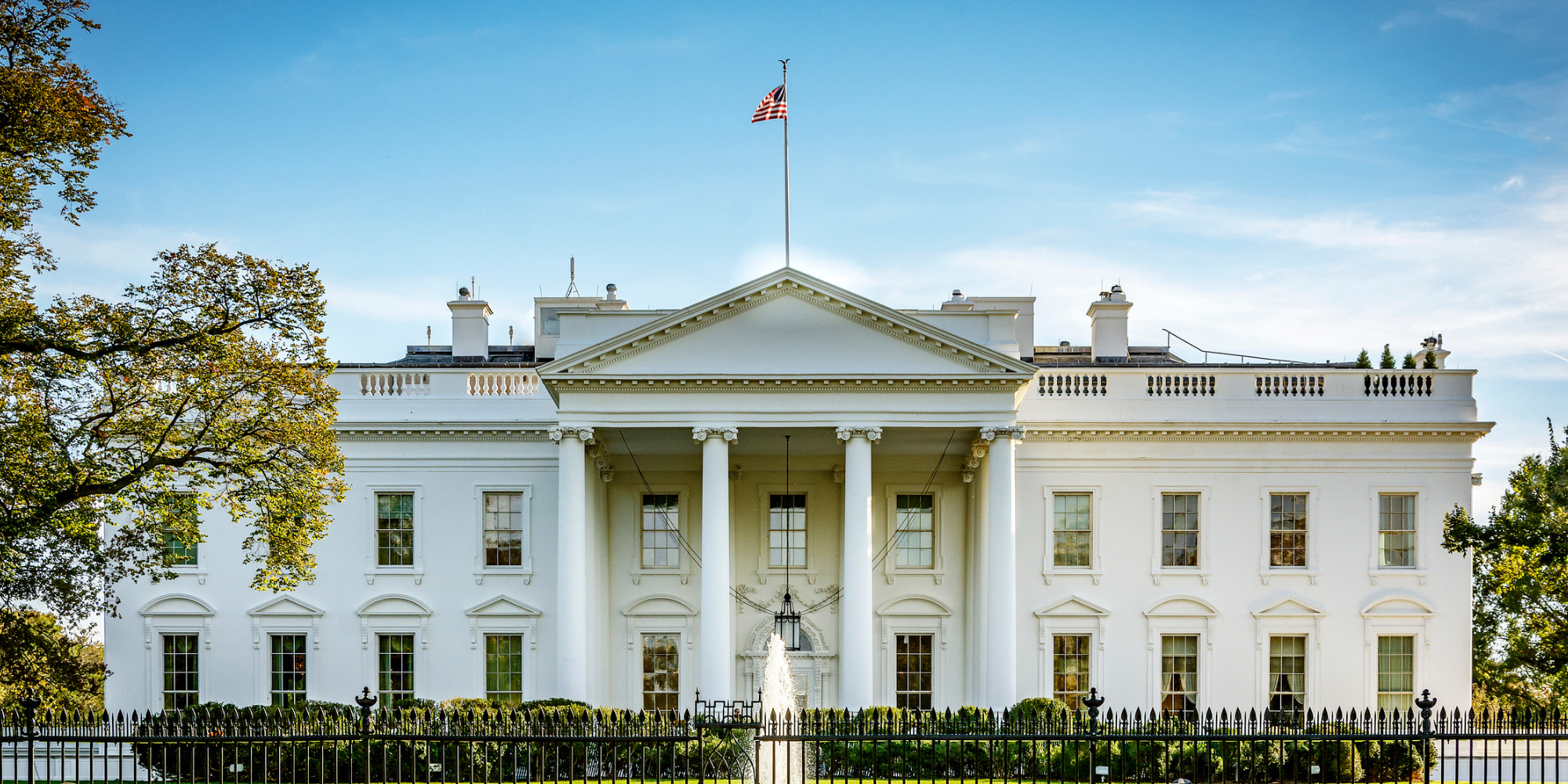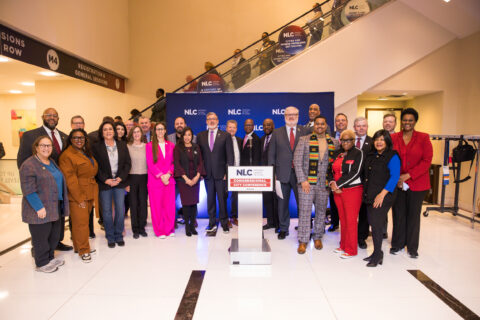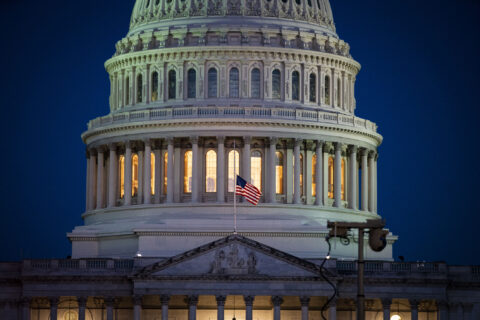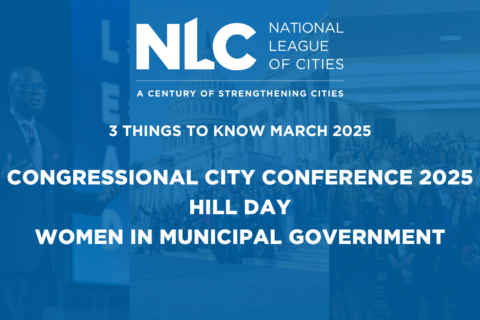On March 9, 2023, President Biden released his proposed budget for Fiscal Year 2024 (FY24). The President’s Budget communicates the Administration’s spending priorities to Congress, which is the first step in the federal budget and appropriations process. Although the President’s proposed budget is a good indicator of the Administration’s priorities, local leaders should keep in mind that the specific funding levels described in this blog are not final and will likely change as a result of negotiations with Congress before enactment.
This budget is not set in stone but is rather a detailed blueprint for funding the federal government. Now, it is up to Congress to negotiate spending caps for the 12 federal appropriations bills for FY24 and determine final funding levels before the start of FY24 on October 1, 2023.
Local leaders in cities, towns and villages may be wondering what parts of the bill they should keep an eye on. Below are local government priorities included in the President’s Budget. NLC will continue to advocate for local government priorities to be included in any final funding agreement.
Supports Public Safety and Law Enforcement
President Biden’s proposed FY24 budget provides $4.4 billion for combating violent crime and gun violence. The budget also requests $880 million in discretionary grants to state and local law enforcement agencies and $3.3 billion in mandatory grants for the Office of Community Oriented Policing (COPS) and the Office of Justice Programs (OJP). The funding for the COPS program includes $537 million for law enforcement agencies to hire new officers. The budget requests $88 million to combat drug trafficking and prevent opioid misuse. The budget provides $200 million for community violence intervention, $10 million for law enforcement officer training on responding to individuals with mental illness or disabilities and $40 million for Project Safe Neighborhoods. The budget also increases the funding for juvenile justice programs to $760 million.
Increases Investments in Environmental Cleanup
The budget includes a significant funding increase for the EPA Brownfields Program, with a proposed total of $131 million compared to $100 million in FY23. This is in addition to the increased funding from the Bipartisan Infrastructure Law.
The Brownfields Program is one of the most useful programs at the local level that supports the revitalization and redevelopment of vacant and abandoned properties that blight communities across the country. For the Superfund Program, the President’s Budget proposes $355.9 million from the general fund, with the balance of the full authorized amount of $1.283 billion coming from excise tax revenue as reinstated through the Inflation Reduction Act.
Strengthens Water Infrastructure
The budget provides level funding compared to FY23 for the Clean Water and Drinking Water State Revolving Funds ($1.639 billion and $1.126 billion respectively) and a slight increase in funding for the Water Infrastructure Finance and Innovation Act Program ($71.9 million). The budget proposal also includes funding for water infrastructure grant programs such as sewer overflows and stormwater management, water infrastructure workforce development, removing lead from drinking water and more.
Addresses Climate Change and Strengthens Community Resilience
The budget proposal includes funding across every federal agency to advance clean energy and reduce greenhouse gas emissions across sectors, invest in pre-disaster mitigation to strengthen infrastructure and reduce the risk of extreme weather events, and advance environmental justice within the communities most impacted by climate change. The President’s proposal includes critical funding for programs under the U.S. Department of Energy’s State and Community Energy Programs, such as $437 million for the Weatherization Assistance Program, but it does not include funding for the Energy Efficiency and Conservation Block Grant (EECBG).
Supports Transportation Projects
Only some federal transportation programs require budget appropriations. However, many key programs for cities are included in the budget such as large multimodal programs like the Rebuilding American Infrastructure with Sustainability and Equity (RAISE) grant program, transit capital, technical assistance funding and more.
The President’s Budget requests $1 billion, along with $640 million in advance appropriations, to support larger intermodal projects that will grow freight and passenger demand in a responsible, effective and safe way. The budget also includes $100 million for the new Thriving Communities program to provide technical assistance and capacity building for local infrastructure projects, as well as $100 million for the Reconnecting Communities Pilot Program.
Additionally, the budget recommends $1.8 billion for the Promoting Resilient Operations for Transformative, Efficient, and Cost-saving Transportation (PROTECT) program, which aims to make transportation infrastructure more resilient to future weather events and natural disasters.
The Federal Transit Administration recommended level is $17 billion total, including $2.9 billion for Capital Investment Grants (along with the $1.6 billion in advanced appropriations), $14 billion in transit formula funds and several proposals to address transit agencies’ anticipated fiscal shortfalls in the coming years due to COVID changing transportation patterns for commuters.
Finally, Charging and Fueling Infrastructure Grants would provide $500 million to strategically deploy publicly accessible electric vehicle charging infrastructure and other alternative fueling infrastructure. Fifty percent of this funding prioritizes projects that expand access to electric vehicle charging and alternative fueling infrastructure within rural areas, low-and moderate-income neighborhoods, and communities with a low ratio of private parking spaces. For additional insights see the U.S. Department of Transportation’s Budget Highlights.
Supports New Annual Funding for Eviction Alternatives and Prevention
The budget requests an incremental 1.6% increase for discretionary programs at the U.S. Department of Housing and Urban Development (HUD), with the majority of additional funds supporting homelessness assistance and prevention programs and programs to preserve and increase the supply of affordable housing. The budget also requests support for new mandatory spending within the HUD budget.
Under discretionary spending, the President’s Budget requests more funding for grants to cities and towns. It requests $3.3 billion for Community Development Block Grant (CDBG) Programs, which is consistent with the current year, and $85 million for a second round of competitive grants to localities to overhaul local systems and policies, such as zoning ordinances, to foster more development of affordable and workforce housing. HUD is expected to release a Notice of Funding Opportunity soon for the first round of such funds that were approved in the Omnibus last year. Increases for the HOME Investment Partnerships Program (HOME) and Homeless Assistance Grants are also requested in the budget.
Under the new mandatory spending request, President Biden seeks to permanently fund the successful Emergency Rental Assistance (ERA) Program that was set up in response to COVID-19 related losses. The ERA program currently administered by the Treasury Department is winding down alongside other emergency response and recovery programs. The budget also says mandatory funding would provide housing vouchers to all youth aging out of foster care annually, expand rental assistance to extremely low-income veteran families, and provide for the renovation and maintenance needs of distressed public housing.
Although NLC supports making funds for an annual ERA program permanent, the House is not likely to pass the new HUD mandatory spending proposal.
Increases Investments for Broadband Infrastructure
The budget includes additional funding for broadband above and beyond what is allocated in the Bipartisan Infrastructure Law, primarily for rural broadband infrastructure: an additional $400 million for the U.S. Department of Agriculture’s ReConnect broadband grant and loan program, and smaller totals for the Rural Utilities Service’s telecommunications program and distance learning and telemedicine program. These programs help to fund and finance broadband services or expansions in rural areas, often served by small, cooperative, or public internet service providers.
The budget also includes a substantial increase for the National Telecommunications and Information Administration, which is tasked with administering the majority of the broadband grant programs in the Bipartisan Infrastructure Law, as well as a modest increase for the Federal Communications Commission. However, the budget request lacks any additional funding for the Affordable Connectivity Program broadband subsidy, which is anticipated to exhaust its current appropriation in mid-2024.
Strengthens Cybersecurity
In support of the recently-released National Cybersecurity Strategy, the President’s Budget increases funding for cybersecurity policy through the FBI, the Office of the National Cyber Director and the National Institute for Standards and Technology and National Telecommunications and Information Administration within the Department of Commerce. . The budget also provides for $3.1 billion for the Cybersecurity and Infrastructure Security Agency, an increase of $145 million over FY23.
Invests in Workforce and Postsecondary Education
The budget reflects the national need for investment in skills training, sectoral strategies and workforce support to address the broad labor market needs across the country. With an 11% proposed increase to the Department of Labor from the enacted FY23 levels, the proposed budget provides a significant increase to the Employment and Training Administration including investments in the federal workforce system (WIOA).
The budget reflects the need to ensure the nation has a skilled workforce to meet the demands of the Bipartisan Infrastructure Law and CHIPS and Science Act. It calls for increased investments in Registered Apprenticeship opportunities while increasing access for historically underrepresented groups, including people of color and women, and diversifying the industry sectors involved. The proposal also includes increased investments in community college postsecondary workforce programs, a new Sectoral Employment through Career Training for Occupational Readiness program and a Civilian Climate Corps.
The Department of Education Budget proposes a 14% increase over FY23 enacted levels, including an increase of $20 million for Career and Technical Education (CTE) State grants, supporting a K-12 workforce pipeline.
Supports Substance Use and Mental Health Programs
The FY24 budget proposal significantly invests in behavioral healthcare with an additional $334 million for the 9-8-8 National Suicide Prevention Hotline, $100 million for mobile crisis response and $1.7 billion for the Community Mental Health Block Grant. Additionally, the budget provides $103 million for the Overdose Prevention Framework, $50 million for hard reduction programs, $2.7 billion for the Substance Use Prevention, Treatment, and Recovery Services Block Grant and $2 billion for the State Opioid Response grant program.
Invests in Early Childcare
The budget reflects the importance of early childhood education in setting the foundation of our nation’s communities. The budget includes a mandatory proposal to fund childcare for low- and middle-income families and universal preschool for all four-year-old children. The budget also invests in important existing programs with $9 billion for the Child Care and Development Block Grant and $13 billion for Head Start. The budget also proposes a new demonstration program to expand high-quality public preschool.
Protects Elections and the Right to Vote
As our democracy faces threats across the country—and to provide state and local election officials with a predictable funding stream for critical capital investments and increased staffing and services—the President’s Budget proposes $5 billion in new elections assistance funding to be allocated over ten years. The budget also proposes to fund an expansion of U.S. Postal Service delivery capacity in underserved areas and support for vote-by-mail, including making ballots postage-free and reducing the cost of other election-related mail for jurisdictions and voters.








